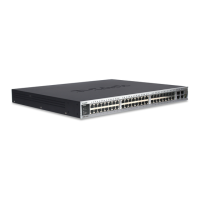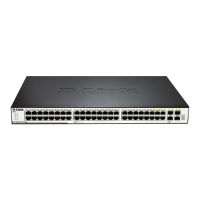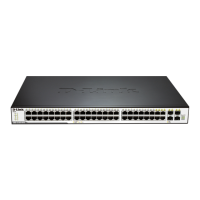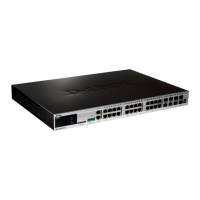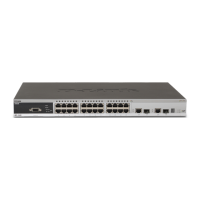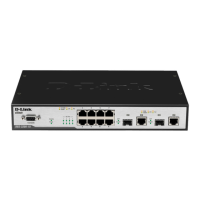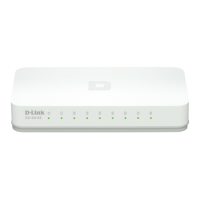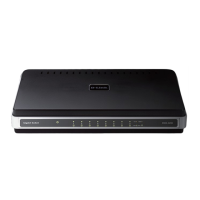DGS-3610 Series Configuration Guide Chapter 28 OSPF Routing Protocol Configuration
these routers, the packets are transparent to them and are simply forwarded as common IP
packets), and the ABRs exchange route information directly. The route information means
the Type-3 LSAs generated by the ABR, and the synchronization mode in the area is not
changed as a result.
To create the virtual connection, execute the following commands in the routing process
configuration mode:
DGS-3610(config-router)# area area-id
virtual-link
router-id [[hello-interval seconds]|
[retransmit-interval seconds] |[transmit-delay
seconds]|[dead-interval seconds]|
[authentication [message-digest | null]
|[[authentication-key key |
message-digest-key keyid md5 key]]]
Create a virtual connection
It should be noted that: If the autonomous system is divided into more than one area, one of
the areas must be the backbone area, to which the other areas must be connected directly
or logically. Also, the backbone area must be in good connection.
The router-id is the ID of the OSPF neighbor device. If you are not sure of
the value of the router-id, you can use the show ip ospf neighbor command
to verify it. How to manually configure the router-id, Please refer to the
chapter of ―Using the Loopback Address as the Route ID‖.
28.2.9 Creating the Default Routes
An ASBR can be forced to generate a default route, which is injected to the OSPF routing
area. If one router is forced to generate the default route, it will become the ASBR
automatically. However, the ASBR will not automatically generate the default route.
To force the ASBR to generate the default route, execute the following commands in the
routing process configuration mode:
DGS-3610(config-router)#
default-information originate [always] [metric
metric-value] [metric-type type-value]
[route-map map-name]
Configure to generate the default route
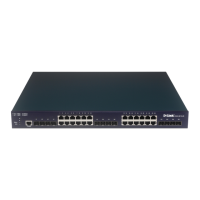
